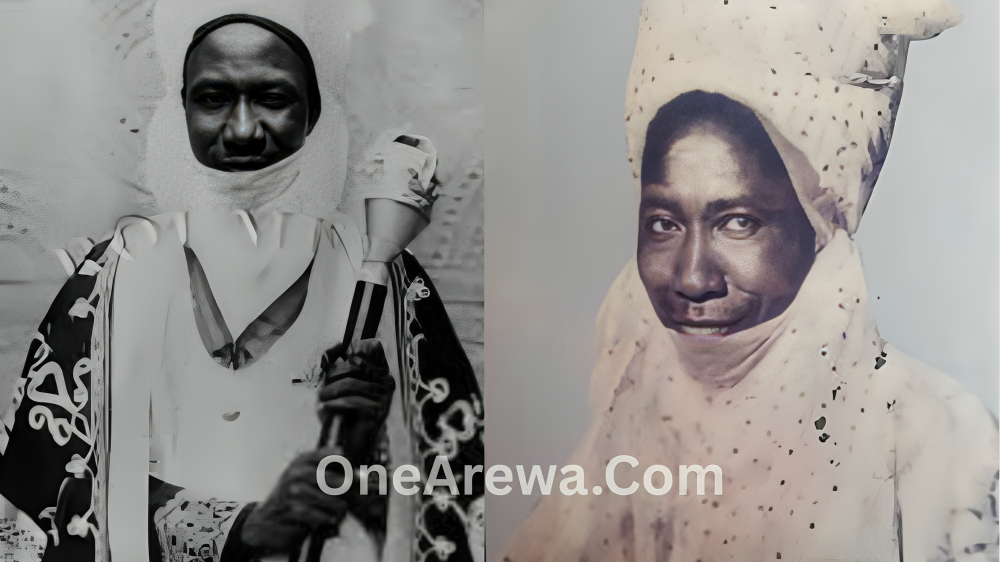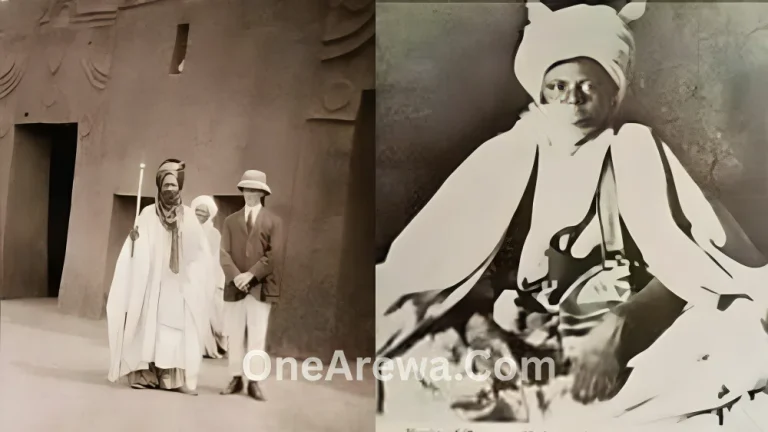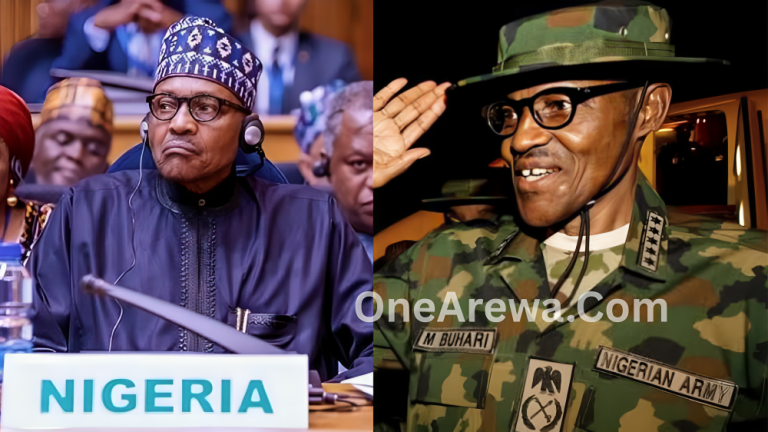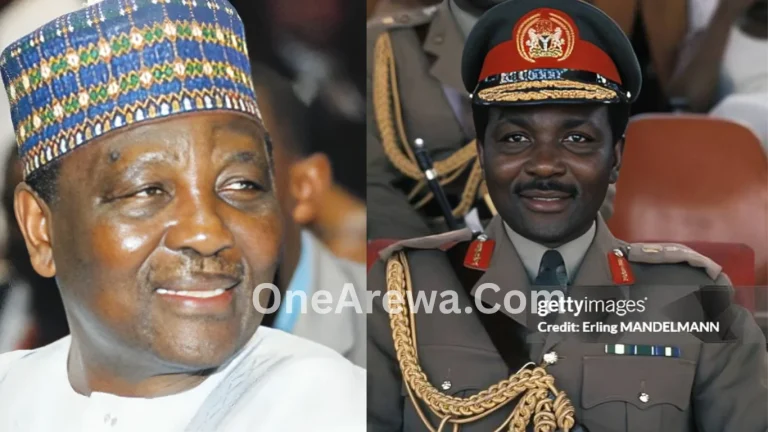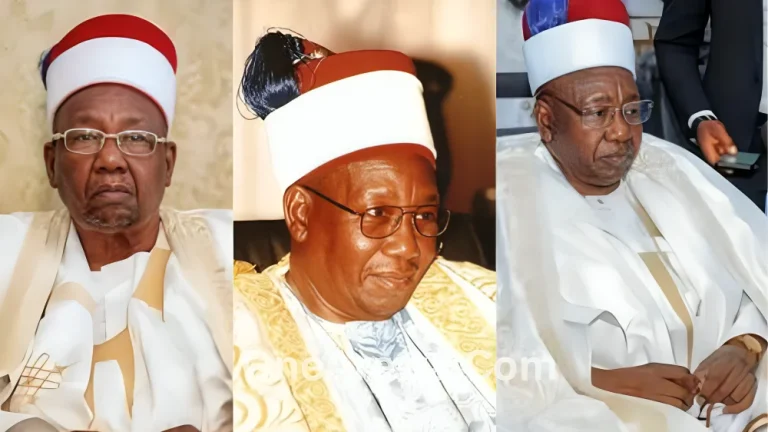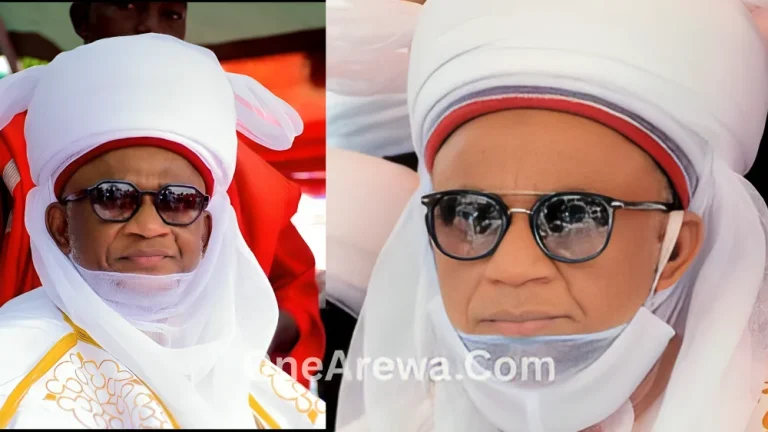Emir of Kano, Muhammadu Sanusi I: The Kano Emirate, Renowned for its Religious and Political Leadership in Northern Nigeria’s History
Emir of Kano, Muhammadu Sanusi I: The Kano Emirate, Renowned for its Religious and Political Leadership in Northern Nigeria’s History
Alhaji Sir Muhammadu Sanusi I KBE (born 1905, reigned 1954–1963, died 1990) was the Emir of Kano and a highly influential traditional leader in colonial Northern Nigeria.
The eldest surviving son of Emir Abdullahi Bayero, he held the title Ciroma of Kano before becoming emir and was a respected Islamic scholar and political figure closely aligned with the Tijaniyya Sufi order of Ibrahim Niass, later becoming its Caliph in Nigeria.
He was appointed Acting Governor of Northern Nigeria in 1957 by British Governor Sir Gawain Bell and was a minister without portfolio in 1958.
Sanusi famously hosted a grand durbar for Queen Elizabeth II in 1956 during her royal visit to Kano.
His reign was marked by political tensions with Sir Ahmadu Bello, the Premier of Northern Nigeria, and allegations of financial mismanagement, which led to his forced abdication and exile to Azare in 1963.
He was knighted as a Knight Commander of the British Empire (KBE) and remembered as one of the most powerful and reform-minded emirs in Nigeria’s history.
His legacy continued through his grandson, Sanusi Lamido Sanusi, who also served as Emir of Kano from 2014 to 2020, was dethroned, and reinstated in May 2024.
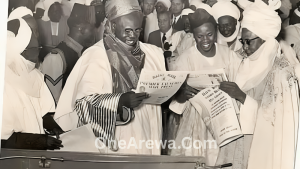
Emir of Kano, Muhammadu Sanusi I Profile
| Fact | Details |
|---|---|
| Full Name | Muhammadu Sanusi I |
| Title | Emir of Kano (1953–1963) |
| Predecessor | Emir Abdullahi Bayero |
| Successor | Emir Muhammad Inuwa |
| Chiroma of Kano | 1926–1953 |
| Birth | 1900, Kano, Nigeria |
| Death | 1991, Wudil, Kano State, Nigeria |
| Burial | Nassarawa Palace, Kano State, Nigeria |
| Dynasty | Dabo (House of Bayero) |
| Father | Emir Abdullahi Bayero |
| Issue | Ado Sanusi (son) |
| Religion | Islam |
| Key Titles | – Acting Governor of Northern Nigeria (1957) – Caliph of Tijaniyya order in Nigeria – Knight Commander of the Order of the British Empire (KBE) |
| Major Events | – Hosted Queen Elizabeth II during her 1956 visit to Kano – Oversaw political and religious reforms in Kano – Abdicated in 1963 after conflict with Sir Ahmadu Bello, leading to self-exile in Azare, Bauchi State |
| Legacy | – Grandson, Sanusi Lamido Sanusi, was Emir of Kano (2014–2020) – Sanusi Lamido also served as Governor of the Central Bank of Nigeria (2009–2014) |
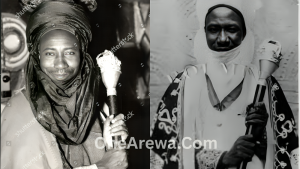
Emir of Kano, Muhammadu Sanusi I
Emir Muhammadu Sanusi I (born 1905, deposed 1963, died 1990) was a prominent traditional and religious leader in Northern Nigeria, serving as the Emir of Kano from 1953 to 1963.
A grandson of Emir Abdullahi Maje Karofi, he ascended the throne after the death of Emir Abdullahi Bayero.
Sanusi I was widely respected for his promotion of Islamic scholarship, support for Sharia law, and his bold reforms in the Kano Emirate’s administration.
He was also a key figure in the Northern Nigerian Traditional Council, where he held significant political influence.
However, his progressive stance and opposition to certain colonial and political interests led to his controversial removal from office in 1963 and subsequent exile to Azare.
Despite his deposition, he left a lasting legacy as a fearless, reform-minded emir, and his impact was later echoed by his grandson, Muhammadu Sanusi II, who also became Emir of Kano.
Check Out: General Murtala Ramat Muhammed: Nigeria’s Boldest Head of State (1975–1976)
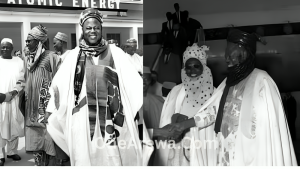
Emir of Kano, Muhammadu Sanusi I Early Life and Rise to Power
Alhaji Sir Muhammadu Sanusi I was born in 1905 into the royal family of Kano as the eldest surviving son of Emir Abdullahi Bayero.
Raised in a deeply religious and aristocratic environment, he received his early education at Kano Middle School, a leading institution for northern elites at the time.
Sanusi quickly gained recognition for his intellect, leadership qualities, and strong Islamic background.
He held the prestigious title of Ciroma of Kano, positioning him as a successor to the throne.
His political journey began in earnest when he became a member of the Northern Regional House of Assembly in 1947, where he played a key role in shaping pre-independence governance.
Upon the death of his father in 1953, Sanusi was appointed Emir of Kano in 1954, marking the beginning of a dynamic and influential reign.
His ascension was widely supported due to his lineage, administrative experience, and deep ties with the Tijaniyya Sufi order, which bolstered his religious authority across Northern Nigeria.
Check Out: Sir Abubakar Tafawa Balewa: Nigeria’s First Prime Minister (1912-1966)
Religious and Political Influence of Emir Muhammadu Sanusi I
Emir Muhammadu Sanusi I wielded immense religious and political influence during his reign from 1954 to 1963, making him one of the most powerful traditional rulers in colonial Northern Nigeria.
As a devout Muslim and strong adherent of the Tijaniyya Sufi order, particularly the branch led by Ibrahim Niass, Sanusi was appointed Caliph of the Tijaniyyah in Nigeria, enhancing his spiritual authority.
Politically, he was a key figure during the late colonial and early post-independence era, serving as a Minister without Portfolio in 1958 and acting as the Governor of Northern Nigeria in 1957 for six months, an unprecedented role for a traditional ruler.
His close relationships with colonial administrators, including Sir Gawain Bell, elevated his political stature.
Sanusi’s reign symbolized a blend of Islamic scholarship, cultural preservation, and modern administrative leadership, though his increasing power eventually led to tensions with political elites like Sir Ahmadu Bello, culminating in his forced abdication in 1963.

Controversy and Deposition of Emir Muhammadu Sanusi I
Emir Muhammadu Sanusi I’s reign came to a controversial end due to a power struggle with Sir Ahmadu Bello, the Sardauna of Sokoto and Premier of the Northern Region.
As Sanusi’s political influence grew, so did tensions between him and the regional government.
Accusations of financial mismanagement were levied against the Emir, though many believe the charges were politically motivated, stemming from his perceived challenge to the Sardauna’s authority.
These events led to an investigation and increasing pressure from the regional government.
Ultimately, in 1963, Sanusi was forced to abdicate the throne and went into self-imposed exile in Azare.
His removal marked a significant moment in the diminishing autonomy of traditional rulers under the new Nigerian political order and showcased the emerging dominance of regional political elites over monarchs.
Check Out: General Yakubu Gowon: Nigeria’s Youngest Head of State and Civil War Leader (1966–1975)
Legacy of Emir Muhammadu Sanusi I
Emir Muhammadu Sanusi I left a profound legacy as one of the most influential traditional rulers in Northern Nigeria’s colonial and post-colonial history.
Known for his strong religious convictions, he was a prominent figure in the Tijaniyya Sufi order, serving as the Caliph of Ibrahim Niass’s movement in Nigeria.
His tenure as Emir from 1954 to 1963 symbolized a powerful blend of religious authority and political engagement.

Trivia
1. Acting Governor: In 1957, Sanusi I served as the Acting Governor of Northern Nigeria, making him the first traditional ruler to ever govern a region in colonial Nigeria.
2. Royal Durbar for the Queen: He hosted a grand durbar in 1956 for Queen Elizabeth II during her visit to Kano — a display of cultural and political power recognized internationally.
3. Knighted by the British: He was knighted as a KBE (Knight Commander of the British Empire) — a rare honor for Nigerian royalty during colonial times.
4. Religious Pilgrim: Emir Sanusi I was a devout Sufi Muslim and a follower of Ibrahim Niass; he frequently went on pilgrimages and was appointed Caliph of the Tijaniyya order in Nigeria.
5. Exiled Royalty: After his controversial abdication in 1963, he lived in self-imposed exile in Azare, Bauchi State, an act seen by many as dignified resistance.
FAQs
1. Who was Emir Muhammadu Sanusi I?
Emir Muhammadu Sanusi I was the Emir of Kano from 1953 to 1963 and served as the acting Governor of Northern Nigeria in 1957.
He was the eldest son of Emir Abdullahi Bayero and played a significant role in both the religious and political spheres of Northern Nigeria.
2. What was Emir Muhammadu Sanusi I’s relationship with British colonial authorities?
Sanusi I had a close relationship with the British colonial administration. He was knighted by the British and became a Knight Commander of the Order of the British Empire (KBE).
He was also appointed as the acting Governor of Northern Nigeria for six months in 1957.
3. How did Emir Muhammadu Sanusi I impact Kano during his reign?
Sanusi I was instrumental in strengthening the political and religious influence of the Kano Emirate.
He presided over key cultural and religious reforms, including hosting Queen Elizabeth II during her visit to Kano in 1956. His reign also marked significant developments in the governance of Kano.
4. What were the controversies surrounding Emir Muhammadu Sanusi I’s reign?
The major controversy during Sanusi I’s reign was his power struggle with Sir Ahmadu Bello, the Sardauna of Sokoto.
Accusations of financial malfeasance and a deteriorating relationship with colonial and regional authorities eventually led to his abdication in 1963.
Following his abdication, he went into self-exile in Azare, Bauchi State.
5. How did Emir Muhammadu Sanusi I influence religion in Northern Nigeria?
Sanusi I was closely affiliated with the Tijaniyya Sufi order and was later appointed as the Caliph of the Tijaniyya in Nigeria.
His leadership in religious matters influenced the spiritual and cultural life of Northern Nigeria, where the Tijaniyya order held significant sway.
He also played a major role in religious leadership in the region, guiding Muslim communities and providing spiritual direction.
6. What legacy did Emir Muhammadu Sanusi I leave behind?
Emir Muhammadu Sanusi I left a lasting legacy in both political and religious spheres.
His grandson, Sanusi Lamido Sanusi, continued the family’s leadership as Emir of Kano (2014–2020) and as the Governor of the Central Bank of Nigeria.
Sanusi I’s contributions to the political development of Northern Nigeria and his role in the religious reforms of the Tijaniyya order are still remembered today.
7. How did Emir Muhammadu Sanusi I’s reign end?
His reign ended in 1963 after he was embroiled in a power struggle with Sir Ahmadu Bello, the Sardauna of Sokoto.
Accusations of corruption and mismanagement eventually led to his abdication and self-exile in Azare, Bauchi State. His deposition marked the end of an influential chapter in the Kano Emirate’s history.
8. What significant events occurred during Emir Muhammadu Sanusi I’s rule?
Notable events during his reign include the grand durbar festival he hosted for Queen Elizabeth II during her visit to Kano in 1956.
His leadership also saw the first major political developments in the region, alongside the formal introduction of reforms in governance and religious matters.
9. Was Emir Muhammadu Sanusi I involved in politics outside of Kano?
Yes, Emir Muhammadu Sanusi I was not just a spiritual leader but also an influential political figure.
He was appointed as the acting Governor of Northern Nigeria in 1957, which gave him considerable influence over the governance of the entire Northern Region.
Additionally, he was a prominent figure in the regional House of Assembly from 1947 and held several ministerial positions.
10. How is Emir Muhammadu Sanusi I remembered today?
Emir Muhammadu Sanusi I is remembered as a key figure in Kano’s history, known for his leadership and his complex role in Northern Nigeria’s political landscape.
His legacy is carried forward by his grandson, Sanusi Lamido Sanusi, who served as Emir of Kano and continued the family’s leadership legacy in the region.
Check Out: Abubakar Imam (1911–1981): Northern Nigeria’s Pioneer Intellectual and Political Icon
In conclusion
Emir Muhammadu Sanusi I was a key figure in the history of the Kano Emirate and Northern Nigeria.
His reign from 1953 to 1963 marked an era of profound political and religious leadership, with his influence extending beyond the borders of Kano.
As a powerful ruler and member of the Tijaniyya Sufi order, his contributions to both governance and religion shaped the course of colonial Nigeria.
Although his tenure ended controversially with his abdication in 1963, his legacy continues to resonate through his descendants, including his grandson, Sanusi Lamido Sanusi.
Emir Sanusi I’s story exemplifies the complex interplay of traditional leadership, colonial dynamics, and religious authority in Northern Nigeria.
Check Out: Mallam Aminu Kano (1920–1983): Biography, Legacy, Political Influence, and Lessons from His Life
Check Out: General Ibrahim Badamasi Babangida: Nigeria’s Military Leader and Head of State (1985–1993)
